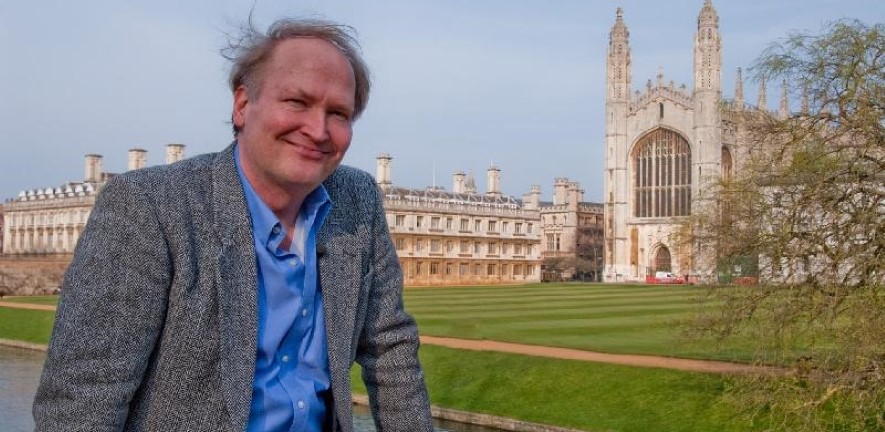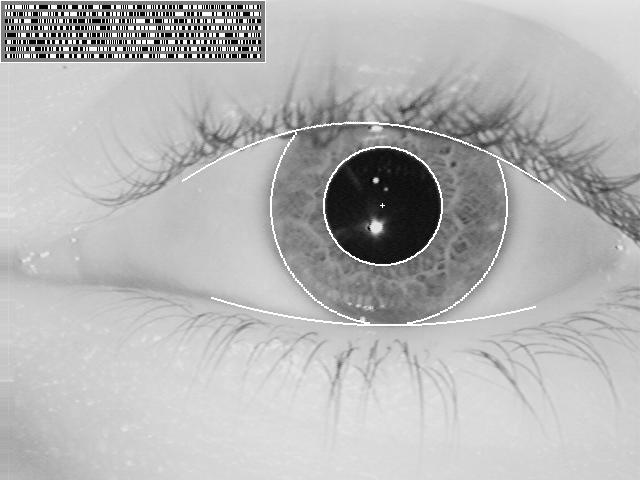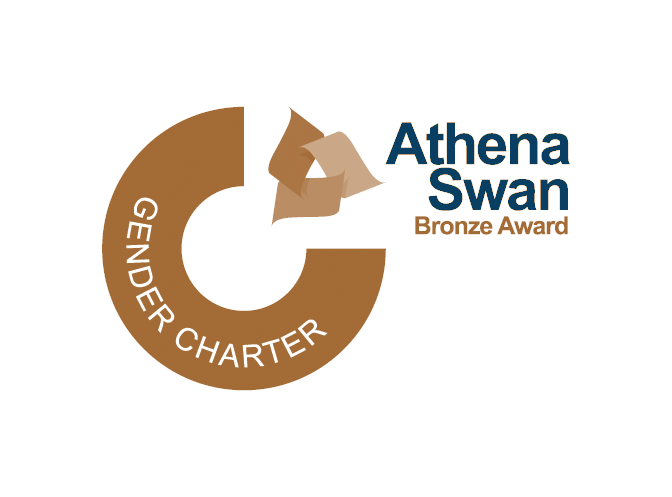
Submitted by auto on Tue, 25/06/2024 - 12:55
John Daugman - a pioneering computer scientist whose iris recognition algorithm helped change the lives of millions of people - died earlier this month at the age of 70.
We're very saddened by the death of our former colleague. Professor John Daugman OBE FREng FBCS was a pioneer in the fields of computer vision, neural computing, and pattern recognition whose work changed lives by giving people the means to prove their identity.
Prof Alan Blackwell, a long-time colleague of John's in this Department, recalls that he was "far in advance of the now routine understanding that neuroscience and computer science have a shared mathematical basis in information theory.
"Always introducing himself as a 'neuroscientist', John had impressively broad interests in art, philosophy of mind, and the humanities, as well as the mathematical foundations of information coding that underpinned the inventions he became famous for."
John's belief that "if you can’t prove your identity, in the eyes of the government, you don’t exist," drove a monumental effort to give disadvantaged people an identity.
Iris recognition technology
John was instrumental in the original development of wavelet methods for image encoding and analysis, which paved the way for numerous advancements in the field.
His most significant achievement was the invention of the IrisCode, a ground-breaking iris recognition algorithm based on 2D Gabor wavelets. This technology revolutionised biometric identification, enabling real-time recognition of individuals by encoding the unique patterns of the iris. Today, his IrisCode has registered over 1.5 billion persons worldwide, notably in India's Unique IDentification Authority of India (UIDAI) programme, which underpins efforts to provide government services and entitlements to Indian citizens by establishing a secure and unique identity.
This technology revolutionised biometric identification, enabling real-time recognition of individuals by encoding the unique patterns of the iris. Today, his IrisCode has registered over 1.5 billion persons worldwide, notably in India's Unique IDentification Authority of India (UIDAI) programme, which underpins efforts to provide government services and entitlements to Indian citizens by establishing a secure and unique identity.
John's belief that "if you can't prove your identity, in the eyes of the government, you don't exist," drove this monumental effort to give disadvantaged people an identity. This technology has also been used by humanitarian organisations to help deliver aid to refugees.
As John discussed in this article, 'The Gift of Identity', the idea of using an iris like a fingerprint originated in the late 1940s when a British ophthalmologist noted what a rich and complex pattern the iris reveals.
Though the idea of recognising someone just by looking at the pattern of their ideas sounds impossible, John thought not.
"I would describe it in terms of entropy which is a fundamental concept from information theory that measures the amount of randomness in a set of patterns," he said. "I realised that iris patterns have a massive amount of entropy, which enables a globally unique signature to be encoded from each one."
"Computer vision initially focused on predictable objects with simple geometries, like manufactured parts," he explained. "But natural objects are not always like that, and now the field is much more focused on probabilistic reasoning and learning. The key breakthrough in my iris recognition algorithms was to regard randomness not as noise, but rather as the key to the solution."
Building on this idea, John went on to develop a set of algorithms called IrisCode which provided an automatic and rapid method for determining a person's identity.
"When the codes for two different iris patterns are compared, the likelihood that they might agree by chance in, say, more than a third of their bits (that is binary digits, which are the basic units of data in computing) is less than one in a million," he said. "Such comparisons are like tossing a fair coin about 250 times in a row – the chances of getting fewer than one third 'heads' are less than one in a million."
Journey to Cambridge UK
Born and educated in the United States, John earned his A.B. and PhD from Harvard University. After a post-doctoral position in Germany, followed by a teaching post at Harvard, his career took him to Japan (he held a Toshiba Endowed Chair at the Tokyo Institute of Technology) and briefly back to Harvard before coming to the University of Cambridge.
Here he initially joined the Zoology Department to further his research into visual perception and biologically-inspired neural computing, before the late Prof Roger Needham recruited him to the Computer Lab (as this Department was then called). John spent the rest of his career with us, eventually becoming Professor of Computer Vision and Pattern Recognition.
Prof Roberto Cipolla, another eminent computer vision researcher at Cambridge (based in Engineering), describes him as "an amazingly thoughtful, intelligent and kind person. I very much valued my discussions with him," Roberto says. "A real intellectual!"
Alan Blackwell adds: "His contributions to Department affairs were pragmatic, often delivered with reasoned reflection and good-humour within any debate. John was a real scholar, proud of it, and always happy to advise and encourage those who sought him out."
An enthusiastic teacher
John taught courses in mathematics, information theory, neural computing, and computer vision. He liked to point out how randomness and complexity could be harnessed to devise solutions to seemingly intractable problems, often inspired by biological "wet-ware", and how his beloved Gabor wavelets represented an "Entente Cordiale" bridging the gap between the spatial and frequency domains. Students remember him as an energetic and inspirational teacher whose enthusiasm was contagious.
Former colleague Prof Neil Dodgson recalls trying to teach one of his courses when John was on sabbatical: "If I recall correctly, I covered about half the material that John did. In the final analysis, his version of the course left the students rather more inspired about the area than mine. My undergraduate supervisees frequently cited his enthusiasm and his deep understanding of the material."
His research students also appreciated John's kindness, open and inquisitive mind and sharp intellect. Dr Mark Humphrys (now at Dublin City University) describes him as "a lovely, gentle, and of course brilliant man. It was an honour to be his student. When 'Tomorrow's World' came to film in the Lab with Carol Vorderman, that was a bit of fun: there was some play acting as spies trying to get through doors with iris recognition systems. John wasn't sure about it all. 'Vaudeville', as he described it. John was a real gent."
Dr Chris Town, another of his PhD students, also remembers him fondly. "I'd greatly enjoyed John's lectures when I was an undergraduate - I ended up teaching some of them years later - and thought I'd already learned a lot from him. However, the very first thing John taught me as a newly-minted PhD student was how to pick a window lock: the Department had just moved into its new building in West Cambridge and John was frustrated by the new ventilation system. So he showed me how to use a wire to open the locked office windows for some real fresh air!
"On another occasion I was working on a paper when John suddenly came into my office to introduce me to a prince from an old central European aristocratic family who had an interest in Silicon Fen. John had an American's irreverent attitude to royalty and privately referred to him as 'the prince of smoke and mirrors', though he was proud of his OBE and noted that Queen Elizabeth had been 'very gracious' when she presented it to him."
Prof Feng Hao of Warwick University, who also completed his PhD under John Daugman (co-supervised by Ross Anderson), "enjoyed every moment of working with John. When dealing with complex concepts, he always insisted on extracting an 'intuition', using the simplest and most intuitive way to explain the complex theory. I was also impressed that he insisted on coding by himself. Outside work, he liked playing chess and was a kind person with a humble nature."
Accolades
During his career, John's work was recognised by a number of honours and awards. These included the Information Technology Award and Medal of the British Computer Society, the 'Time 100' Innovators' Award, and the Order of the British Empire (OBE). He was elected to Fellowships of the Royal Academy of Engineering, the US National Academy of Inventors, the Institute of Mathematics and its Applications, the International Association for Pattern Recognition, and the British Computer Society.
His election as a finalist for the European Inventor of the Year Award and his induction into the US National Inventors Hall of Fame are testaments to his lasting impact on the world of technology and innovation. John also held a sabbatical position as the Johann Bernoulli Chair of Mathematics and Informatics at the University of Groningen.
John Daugman will be remembered not only for his brilliant mind and innovative spirit but also for his dedication to making the world a better place through technology. He was also the founder and benefactor of the Cambridge Chrysalis Trust, which supports wildlife conservation and educational initiatives.
His work continues to inspire and influence, ensuring that his legacy will endure for generations to come. Our thoughts are with his family, especially his wife, Dr Cathryn Downing, who was not only his soul-mate but also a close academic collaborator who co-authored many important papers with him.
-
By Chris Town, with contributions from the quoted individuals and some others.

